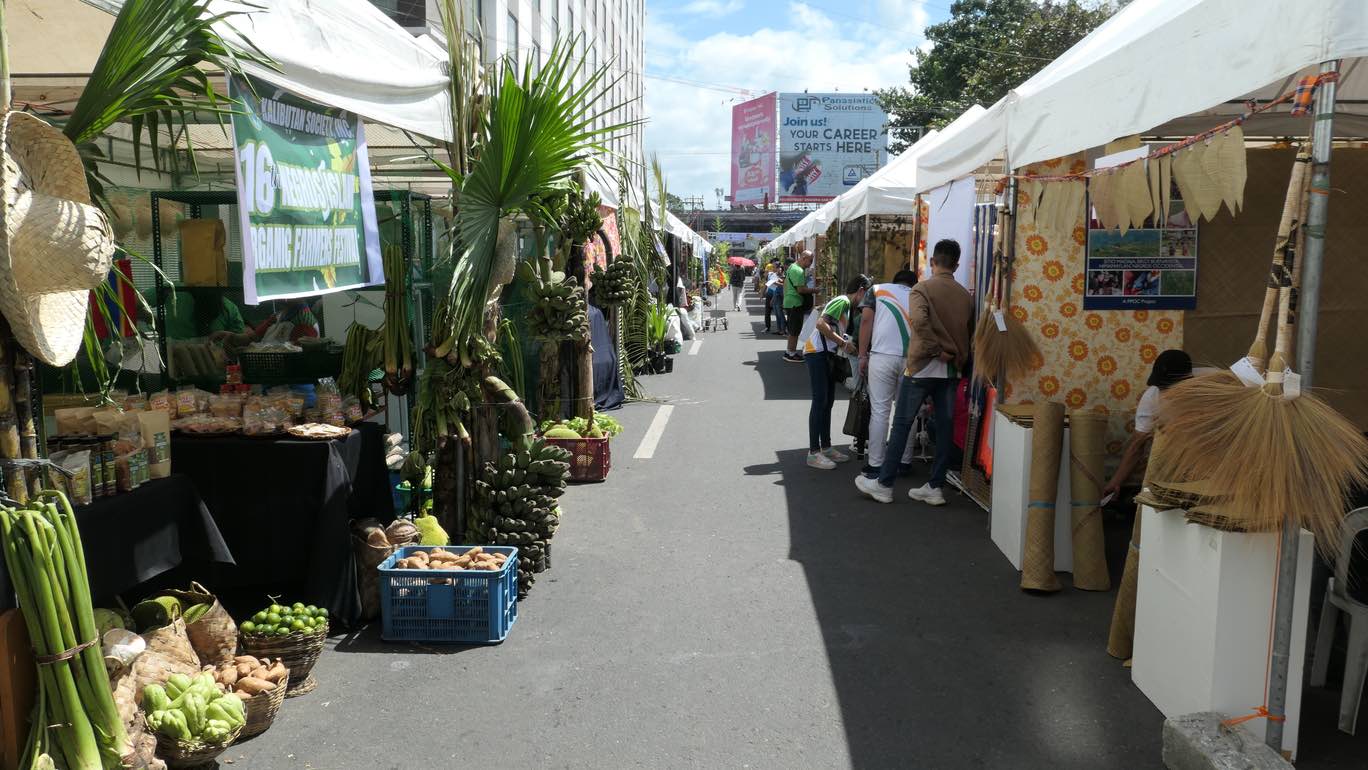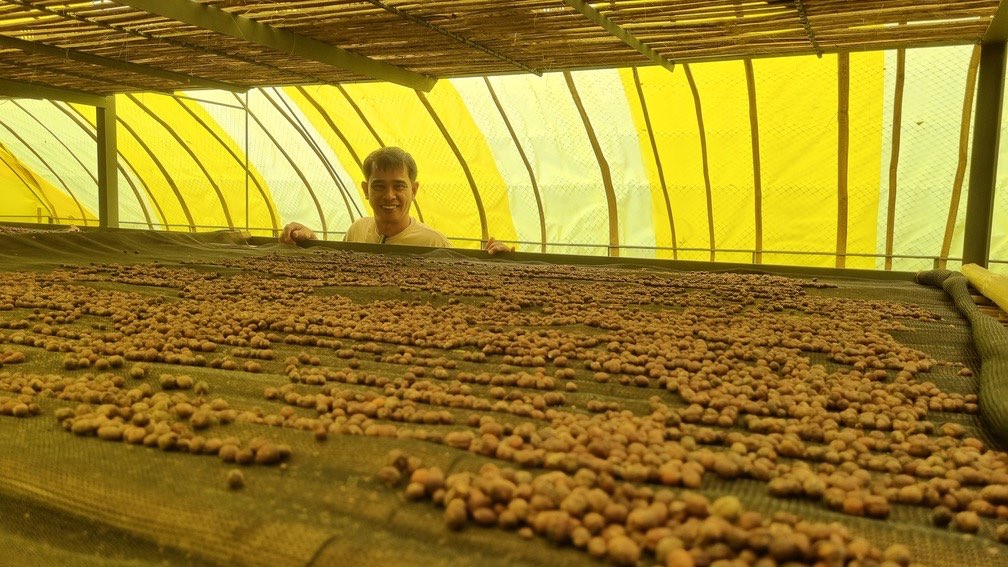The food that made us: Stories from Terra Madre
At the inaugural Terra Madre Visayas festival, the premiere event of Slow Food, a global movement that drives for ethical farming and preservation of local food heritage, international director general Paolo Di Croce stressed the importance of having a "good, clean, and fair" food system.
“People don’t realize the real cost of food. We have to be educated, and we have to fight against the lie that good, quality food is a privilege,” he said.
Since its inception in 1989, Slow Food has grown from a grassroots sustainability effort to a global movement across 160 countries dedicated to reshaping how food is cultivated, produced, and distributed. In Negros, the movement is represented by a number of communities built around specific crops, ingredients, or products. With each concentrating on their own areas of expertise, these communities are ensuring the preservation of their respective food cultures, and its survival to the next generation.

Protecting heirloom crops
A perfect example of an heirloom crop is criollo cacao. Originating in Mexico and arriving in the Philippines via the Spanish Galleon Trade, the species came close to extinction due to its delicate nature and susceptibility to cross-pollination. Highly prized by artisanal chocolatiers for its nutty taste and low acidity, farmer Chris Fadriga took it upon himself to scour the country for untainted plants from which to create a new population. Discovering hitherto unknown samples from far-flung areas like Batangas, Cebu, and Siquijor, Fadriga was able to begin growing criollo in Negros.
To date, Fadriga’s efforts have yielded criollo strains with unprecedented levels of purity, garnering a coveted Gold award at the 2021 International Cocoa Awards (ICA) in Paris. While Fadriga is happy to share his cacao know-how with all who ask, his priority hasn’t changed: “What I’m trying to do now is work with farmers, teaching them to grow cacao as their livelihood and help meet demand. When we won gold, people started asking—they wanted tons! [For the long term], we realized that we should sell shoes, and not the leather. We have to develop our chocolate industry for us to maximize the value of what we have.”

With international recognition, endless inquiries, and an affiliation with Slow Food to help preserve and promote his life’s work, Fadriga remains committed to his dream of placing Negros at the forefront of global criollo production.
Giving farmers a voice
Amidst the bustling booths of Terra Madre Visayas, a coffee stall churned out order after order of iced lattes, long blacks, and other caffeinated treats. Bold, full flavored, and aromatic, an inspection of the beans used to make said drinks showed them to be proudly named after the farmers who’d grown them on nearby Mount Kanlaon. One such name was that of Teddy Cañete of Sugar Valley Coffee.
An advocate for fair pricing of quality coffee in his role as chairman of M3CG-AgriCoop, Teddy was selected by Slow Food’s Western Visayas chapter to represent his fellow farmers at Terra Madre Salone del Gusto in Turin, Italy. Inasmuch as Terra Madre Visayas would attract scores of organic farmers from around the region, the Turin edition does much the same, albeit on a much larger scale, drawing hundreds of thousands of international attendees each year.
“I still have a lot to learn,” Teddy tells PhilSTAR L!fe. “I was so surprised—these international people were listening to what I had to say. They welcomed me as a member of the community, and I saw, with my own eyes, that our coffee is good. Most of all, I learned I can talk to anyone, and it made me so proud to represent our country.”

Since his Terra Madre experience, Teddy has been a key player in Slow Food’s Coffee Coalition, working with technical advisors to help local farmers to process and market their crops, while also promoting eco-tourism in the area. Today, Teddy regularly introduces visitors to the basics of coffee production, while offering a variety of hiking tours for guests to climb Mount Kanlaon and visit other farms.
“Terra Madre [in Italy] was the first time I saw the international perspectives on coffee, and the huge demand there is for it. The biggest challenge now is providing supply for that demand—that’s my motivation to keep pursuing education and helping to upgrade the quality of our coffee farmers,” he said.
Populating the Ark of Taste
The Ark of Taste is one of Slow Food’s foremost tools in protecting heritage dishes, highlighting region-specific recipes, ingredients, and products in danger of disappearing within a few generations. Assembled by a global network of local cooks, artisans, and educators, the Ark of Taste serves as a living chronicle of the world’s culinary history.
For Advance Central College (ACC) President Mary Rose Rodriguez of Antique, the Ark of Taste represented a means of adding resonance to work she and her students had been doing for over a decade, while simultaneously instilling a sense of pride for their hometown. Encouraged by former Malacañang Executive Chef Aurora “Babes” Austria to document Antique’s unique culinary offerings, Rodriguez began the Food Heritage of Antique Project 12 years ago to explore all that the province had to offer.
“Nobody was doing it!” says Rodriguez. “Unlike in places like Bacolod, Pampanga, Bulacan–those places are so ahead! For the heritage dishes of Antique, nobody was researching, and no one was documenting. So that’s how we got started.”
%20collected%20and%20shaped%20into%20thin%20circles%20and%20lightly%20pan%20fried%20for%20breakfast.jpg)
With ACC priding itself on being an institution that “brings Antiqueños to the world,” the researchers were uniquely qualified by the time the Ark of Taste made its way to the Visayas. Rodriguez nominated a dish called pinindang. Produced by the wives of Antique fishermen, the delicacy is comprised of saltless, sun-dried anchovies (humoy-humoy) collected and shaped into thin circles and lightly pan fried for breakfast. Pinindang was an ideal candidate for the Ark of Taste and, since being included, interest in the formerly obscure delicacy created a demand (and accompanying revenue stream) that Antique’s fisherwomen have enthusiastically stepped up to meet.
Creating new opportunities
The previously untapped benefits of shining a light on one’s hometown’s offerings are known to chef and teacher Vinsoy Abawan of Guimaras, who’s been helping to revive a traditional form of organic sea salt blocks, known as tultul. To do this, Abawan sought out Serafin and Emma Ganila of Barangay Hoskyn, two of the last remaining tultul producers, to learn the techniques their ancestors had perfected as far back as 1937. He would soon find the creation of the coveted condiment to be a meticulous, eight-day process involving the burning of brine-soaked driftwood, straining the ashes, mixing them with coconut milk, and then slowly soaking and heating the resultant mixture until only salt remains. Cut into blocks, tultul is named for the dabbing motions used by locals to season their rice. With tultul firmly established in the Ark of Taste, Vinsoy and his team work to pack and market the product to a wider audience.
As demand for the condiment has increased, the tultul-producing team of Serafin and Emma Ganila has grown to include eight families in less than six months.
“This all started because I wanted to create a sense of community pride and promote our community as the home of tultul makers,” he said.
%20is%20a%20heritage%20food%20finding%20popularity%20with%20for%20its%20unique%20salty-savory%20profile.jpg)
From showcasing the best of the region, to introducing the public to Slow Food and its advocacies, Terra Madre Visayas was a resounding success. With the efforts of the entire Slow Food Community, the event was a testament to the importance of food in modern society. As per social entrepreneur Ramon “Chin Chin” Uy, the affair was only the first step in introducing the Slow Food movement to the country at large, with plans in motion for a larger, nationwide event.
Where Negros has long been known as a haven for foodies, the island now stands primed to lead the nation in adopting the principles of cultural preservation and food security for a legacy that Filipinos can be proud of for generations to come.



